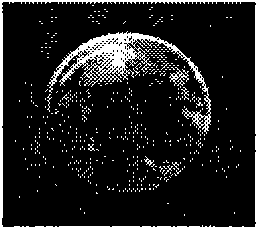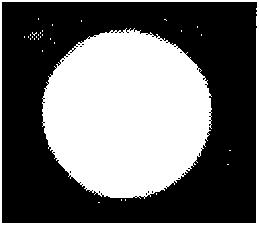ZnO quantum dot vector/DNA composite-containing collagen-based composite cornea substitute, and preparation method and application thereof
A substitute and quantum dot technology, applied in the field of collagen-based composite corneal substitutes, can solve the problems of biotoxicity restricting applications, achieve easy processing, long-term storage and transportation, improve stability and mechanical strength, and promote corneal regeneration. Effect
- Summary
- Abstract
- Description
- Claims
- Application Information
AI Technical Summary
Problems solved by technology
Method used
Image
Examples
Embodiment 1
[0032] The proportion of each component of the collagen corneal substitute is as follows:
[0033] Pig skin type Ⅰ collagen: MPDSAH (mass ratio) 1:0
[0034] Coll-NH 2 :EDC:NHS (molar ratio) 1:1:1
[0035] (1) Preparation of cross-linked collagen corneal substitute: Take 0.5g of 13.7% pigskin type Ⅰ collagen solution into a syringe, and connect another syringe to seal through a T-shaped container, push and pull repeatedly to mix well, and then use a micro-syringe to measure Inject crosslinkers EDC and NHS, where Coll-NH 2 : EDC: NHS = 1: 1: 1 (molar ratio), push and pull repeatedly to mix evenly, then add an appropriate amount of 2mol / L NaOH solution with a micro syringe to adjust the pH to about 5.5. After mixing evenly, the solution was poured into the mold, and then put into the clamp to fix it, 100% humidity, reacted at room temperature for 16 hours, and then moved into an oven at 37°C for aging for 5 hours. Remove the jig, open the mold and take out the corneal sample...
Embodiment 2
[0039] The proportions of the components of the collagen / MPDSAH composite corneal substitute are as follows:
[0040] Pig skin type Ⅰ collagen: MPDSAH (mass ratio) 1:0.3
[0041] Coll-NH 2 :EDC:NHS (molar ratio) 1:1:1
[0042] MPDSAH: PEGDA (mass ratio) 2:1
[0043] Irgacure2959: MPDSAH (molar ratio) 0.02:1
[0044] The steps of preparing the bioactive composite corneal substitute with the above-mentioned components are as follows:
[0045] (1) Preparation of composite corneal substitute: Take 0.5g of 13.7% pigskin type Ⅰ collagen solution into a syringe, and connect another syringe to seal through a T-shaped container, push and pull to mix evenly; the measured amount is pig skin type Ⅰ collagen : The MPDSAH of MPDSAH=1:0.3 (mass ratio) is dissolved in water, moves into the T-shaped container through the sealing pad with a micro-injector, pushes and pulls repeatedly to mix evenly, then injects cross-linking agent EDC, NHS and photoinitiator Irgacure 2959 sequentially with ...
Embodiment 3
[0049] The proportions of the components of the collagen / MPDSAH composite corneal substitute are as follows:
[0050] Pig skin type Ⅰ collagen: MPDSAH (mass ratio) 1:1
[0051] Coll-NH 2 :EDC:NHS (molar ratio) 1:1:1
[0052] MPDSAH: PEGDA (mass ratio) 2:1
[0053] Irgacure2959: MPDSAH (molar ratio) 0.02:1
[0054] The steps of preparing the bioactive composite corneal substitute with the above-mentioned components are as follows:
[0055] (1) Preparation of composite corneal substitute: Take 0.5g of 13.7% pigskin type Ⅰ collagen solution into a syringe, and connect another syringe to seal through a T-shaped container, push and pull to mix evenly; the measured amount is pig skin type Ⅰ collagen : The MPDSAH of MPDSAH=1:1 (mass ratio) is dissolved in water, moves into the T-shaped container through the sealing gasket with a micro-injector, pushes and pulls repeatedly to mix evenly, then injects cross-linking agent EDC, NHS and photoinitiator Irgacure 2959 sequentially with a...
PUM
 Login to View More
Login to View More Abstract
Description
Claims
Application Information
 Login to View More
Login to View More - R&D
- Intellectual Property
- Life Sciences
- Materials
- Tech Scout
- Unparalleled Data Quality
- Higher Quality Content
- 60% Fewer Hallucinations
Browse by: Latest US Patents, China's latest patents, Technical Efficacy Thesaurus, Application Domain, Technology Topic, Popular Technical Reports.
© 2025 PatSnap. All rights reserved.Legal|Privacy policy|Modern Slavery Act Transparency Statement|Sitemap|About US| Contact US: help@patsnap.com



